Sapphire Group of Biscuit Basin
Page 1 2
Among all thermal groups of Upper Geyser Basin the Biscuit Basin forms the northwesternmost tip. It can be reached via the hiking routes from the Old Faithful area or simply by car, driving 4 km (2.5 miles) north on the Grand Loop Road from Old Faithful. The Sapphire Group of Biscuit Basin encompasses the features west of Firehole River. From the parking lot it is accessible via a bridge over the river. Subsequently boardwalks take care of a safe walk through the area.
The parking lot is also the best spot to observe the perpetual spouter UNNG-BBG-8 on the west bank of Firehole River. This feature developed in the beginning of 2006 and has been informally named "Salt & Pepper Geyser" because of two active vents adjacent to each other.
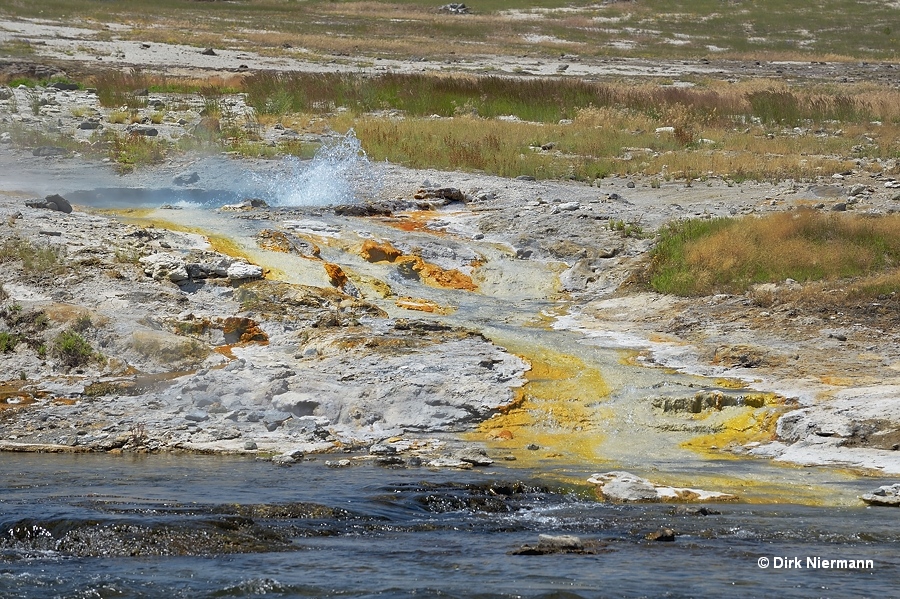
Immediately beyond the bridge a colorful hot spring runoff shows up. Within the runoff lies UNNG-BBG-9, a small and unimpressive spring, sometimes showing some splashing.
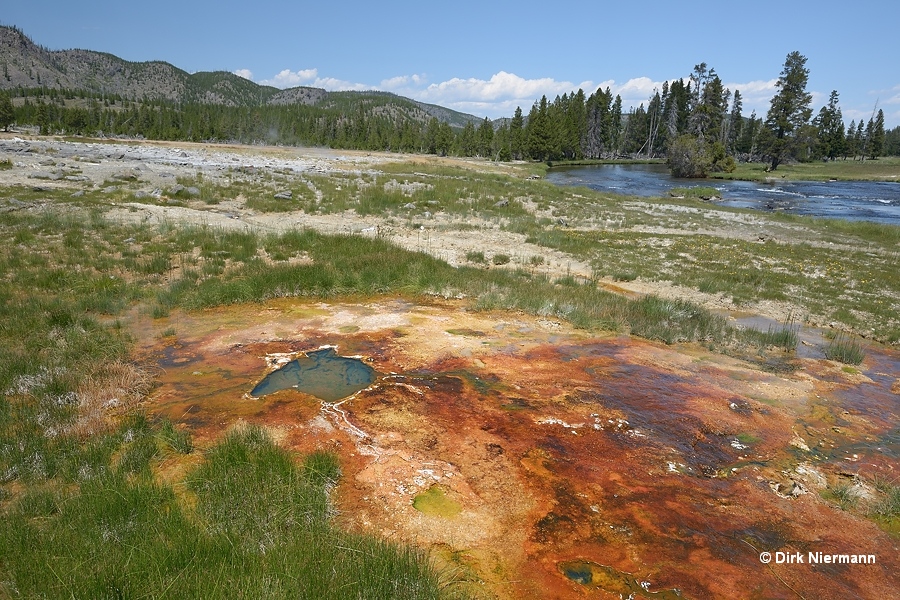
The first really eye-catching features are two large, opalescent blue colored hot pools. Black Opal Pool, the one closest to Firehole River, is capable of powerful eruptions of considerable height. The last one ocurred in 1953.
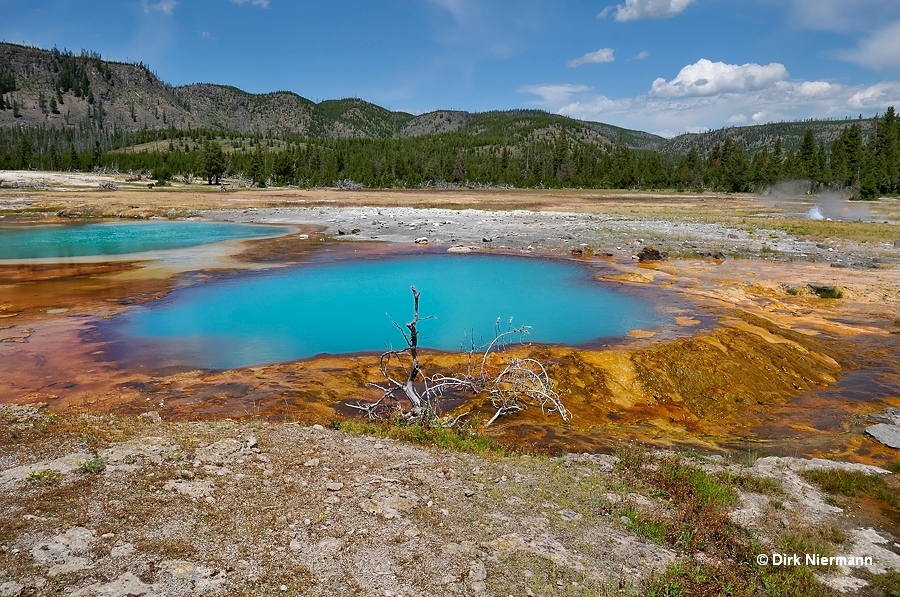
Black Opal Pools neighbor to the west, Black Diamond Pool, is known for even stronger eruptions up to 24 m (80 feet) in 2006. The last reported geyser activity was in 2016, before it underwent a steam explosion in 2024 (see below).
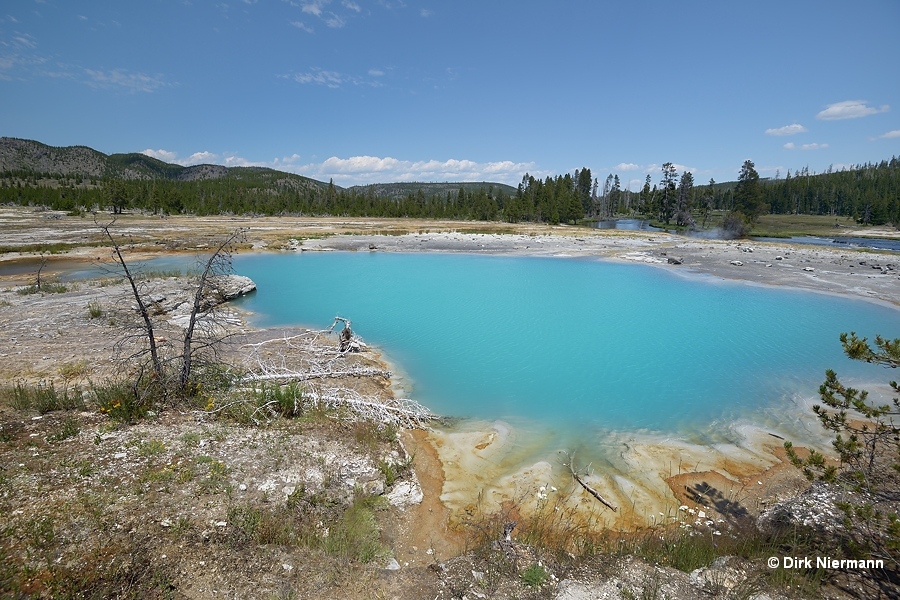
Third in the row is the usually quiet Wall Pool. Unfortunately, for decades the signs attached to the handrail designate Wall Pool as Black Diamond Pool, and vice versa. On this website we rely on the allocation by T. Scott Bryan, who together with Lee H. Whittlesey, Rocco Paperiello and others did extensive research to find the historical correct names of thermal features in Yellowstone.
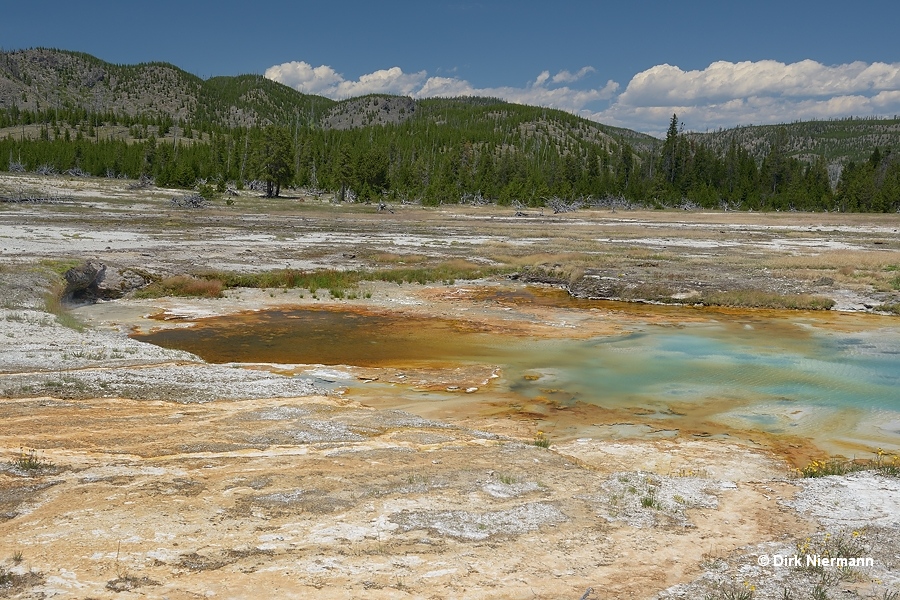
Witnessing the steam explosion on July 23rd, 2024
We visited Biscuit Basin again on July 20th, 2024, three days before a severe hydrothermal explosion of Wall Pool and Black Diamond Pool took place. On our visit, the visual appearance of the pool complex, including Black Opal Pool, was quite different to what we had seen the years before. All the vivid colors were gone, Black Opal Pool's water level had lowered and, in contrast to Black Opal Pool, Black Diamond and Wall Pool were steaming heavily, accompanied by agitated, turbid water. If I had known that this were omens of a hydrothermal explosion, I would have turned on my heels to go back immediately, but not before taking a closer shot of the pools. But on that day, we unsuspectingly proceeded for a hike to Mystic Falls.
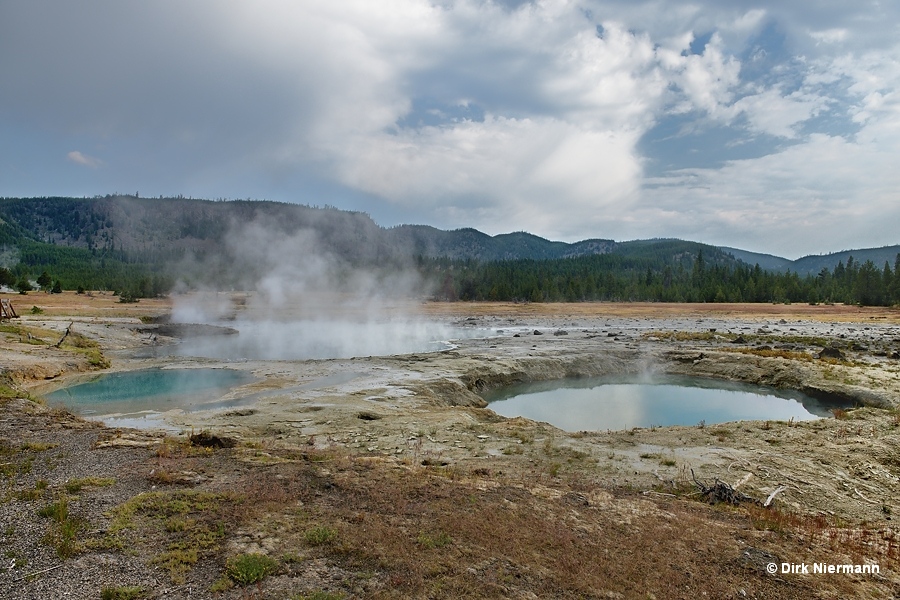
In general and partly also in detail the explosive origin and development history of all three pools is well known and published by researchers. Some of the former, quite frequently occuring steam explosions even have been witnessed by visitors, for example a minor one of Black Diamond Pool in 2006. Others revealed themselves later by the size and distribution of ejected boulders and debris. So further hydrothermal explosions in this spot were to be expected, and still are to be expected.
Another one of our photos from July 20th, 2024 shows the unnamed, small pool between the boardwalk and Black Diamond Pool. Apart from the turbid water in Black Diamond Pool and Black Opal Pool there was nothing to indicate that an explosive event was imminent.
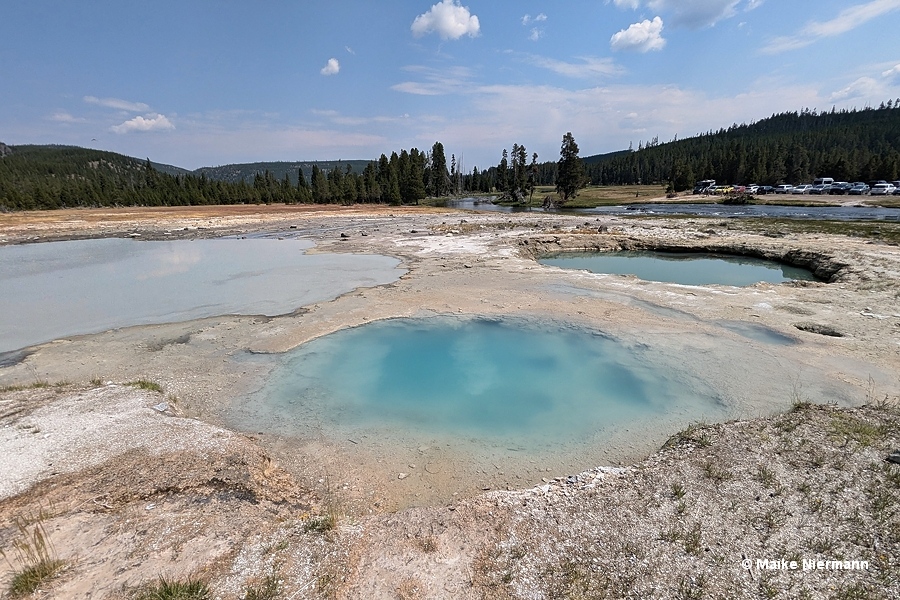
We witnessed the hydrothermal explosion on July 23rd, 2024 form the boardwalk beyond Splendid Geyser in the Daisy Group. I just watched out for eruptions of Pyramid Geyser, so accidentally Biscuit Basin (obscured only by a ribbon of trees) was in my field of vision. While the noise of the blast was only weakly audible, within a second a large column of water, debris, and steam rose into the sky. Actually, it was split up even in three clearly distinctive columns. We were shocked because instantly it became clear that this was not an ordinary geyser eruption but a steam explosion of devastating power.
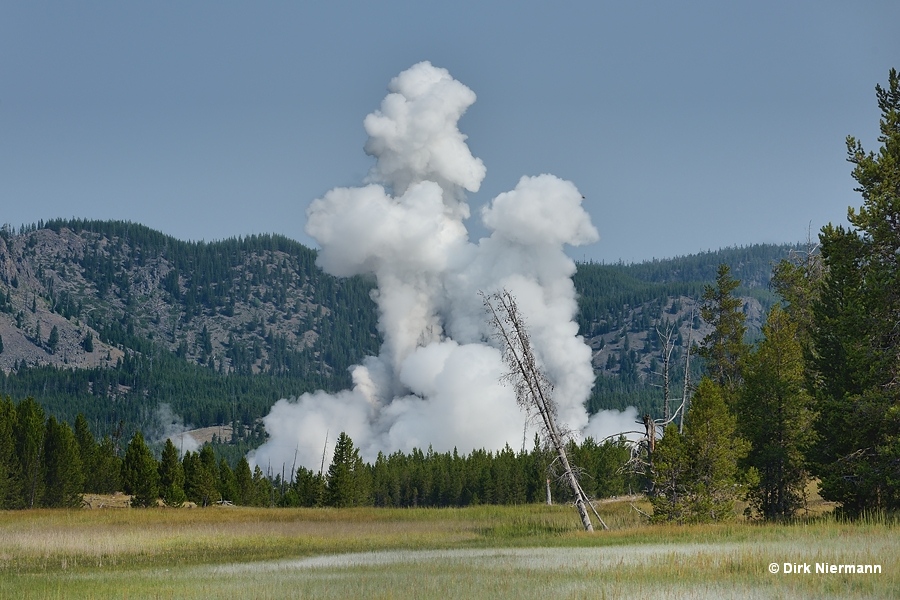
It took not much more than one minute for the explosion column to collapse and disintegrate while sending a final gigantic mushroom cloud heavenwards. Later geologists at the Yellowstone Volcano Observatory (YVO) estimated the height of the plume at 600 feet (180 meters).
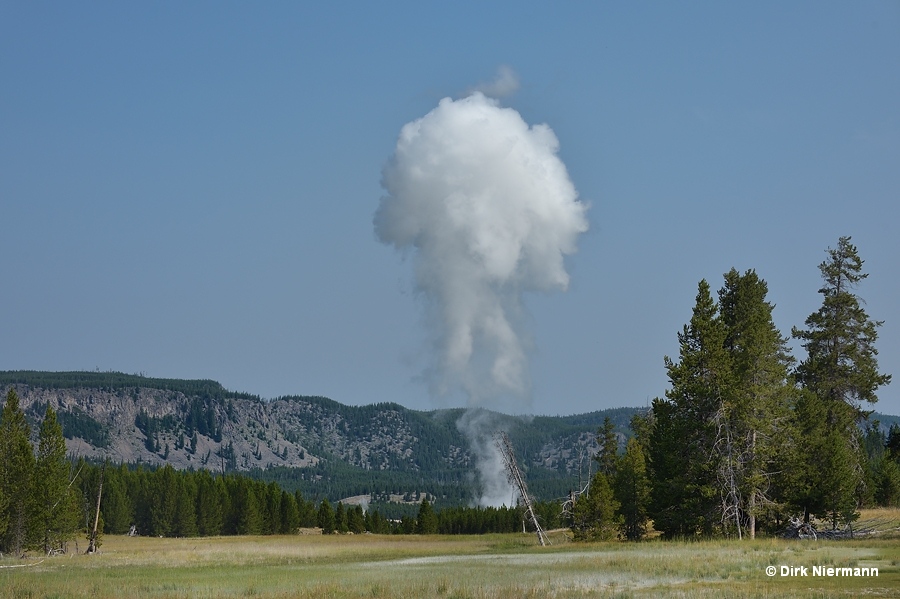
Not knowing what exactly had happened we headed back to the visitor center at Old Faithful. It needed some time until information was available that nobody had been severely injured and where exactly the origin of the explosion had been located. But it was not until the next day that we hiked the Old Road from Old Faithful to Biscuit Basin to have a look at the destruction caused by the explosion. Of course, Biscuit Basin was closed to public entry and will be for the rest of the 2024 season.
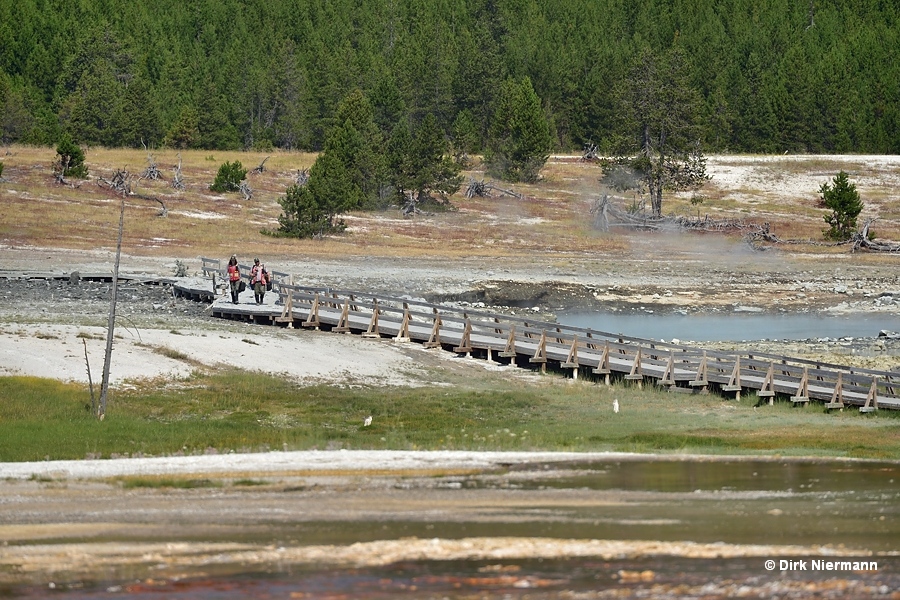
From the hillside where the Old Road runs down to Biscuit Basin damages and alterations in Biscuit Basin were easily to be seen. The boardwalk near the pools was partly destroyed and it had been sheer luck that nobody came to any harm. The explosion crater incorporates Wall Pool and large parts of Black Diamond Pool, while Black Opal Pool seems to be just slightly affected. Three things are certain already now: Black Diamond Pool and Wall Pool again got a different, larger shape, this was not the last steam explosion in this place, and future access of visitors has to respect a safer distance to the explosion-hazard area.
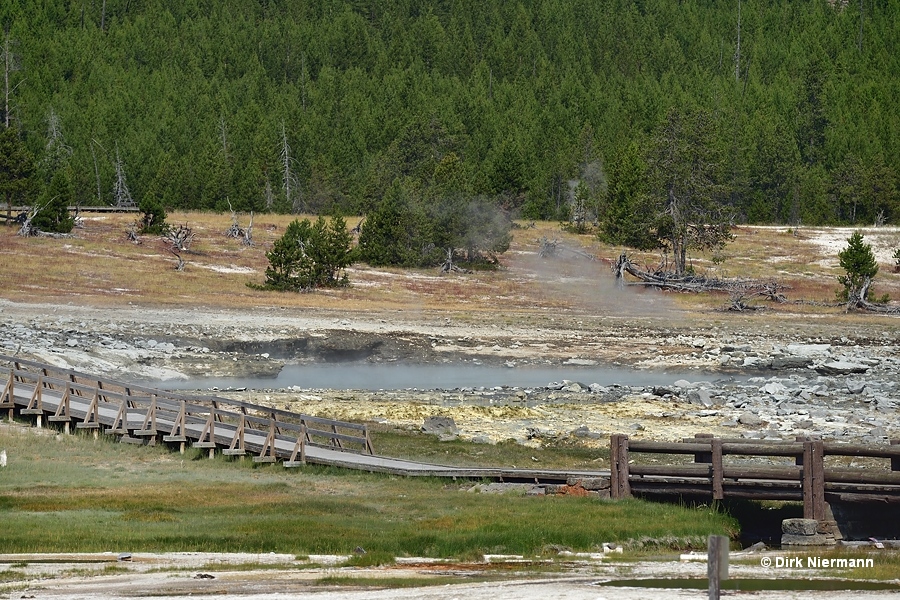
Further Features of Biscuit Basin
During the known history Sapphire Pool has been the tallest geyser of Biscuit Basin. After the 1959 earthquake it erupted up to 38 m (125 feet) high, blasting away almost all of the biscuit shaped sinter aggregations along the rim. It continued playing with decreasing vigor up until 1971. The exceptionally deep blue spring has been dormant since then, a short interrupt occured only in 1991. In the picture some "biscuit structures" are recognizable in the foreground on the right side. Fortunately, here at least small remnants of the formerly widespread formations that led to the name Biscuit Basin are preserved.
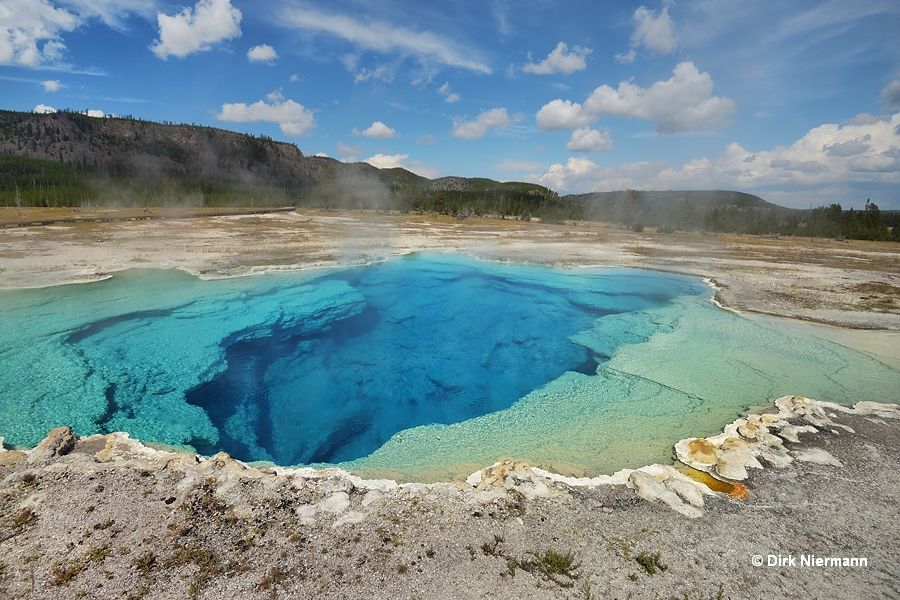
Beyond Sapphire Pool the boardwalk forms a loop trail. Walking clockwise you first come across Jewel Geyser, whose beaded sinter formations are really impressive. Jewel is a very frequent performer, showing an interval of approimately 8 minutes. From 1932 to 1935 Jewel Geyser even was used as a replacement for the famous, but vandalized Handkerchief Pool. Textiles like handkerchiefs placed in the geyser were drawn into one vent and thrown out at the eruption by another vent. Fortunately, this misuse had been terminated by park officials before Jewel Geyser suffered damage.
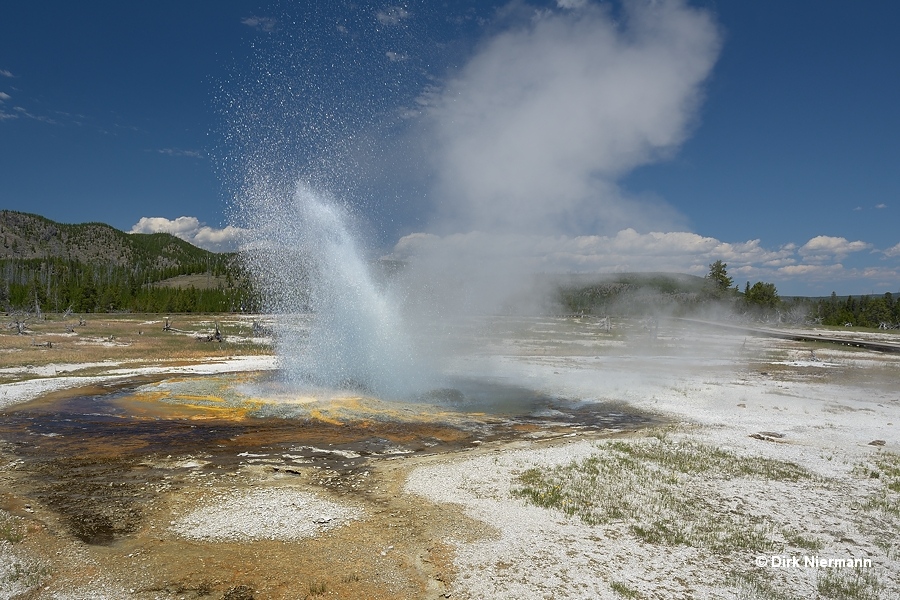
Across the boardwalk from Jewel Geyser a rolling geyserite structure is vaguely reminiscent of a giant clam's shell. The accordingly named Shell Spring is a cyclic geyser with several hours of recovery between the long lasting active phases. Although Shell Spring is only two feet deep, in July 1932 a 3-year-old girl from Idaho fell into it and died a short time thereafter.
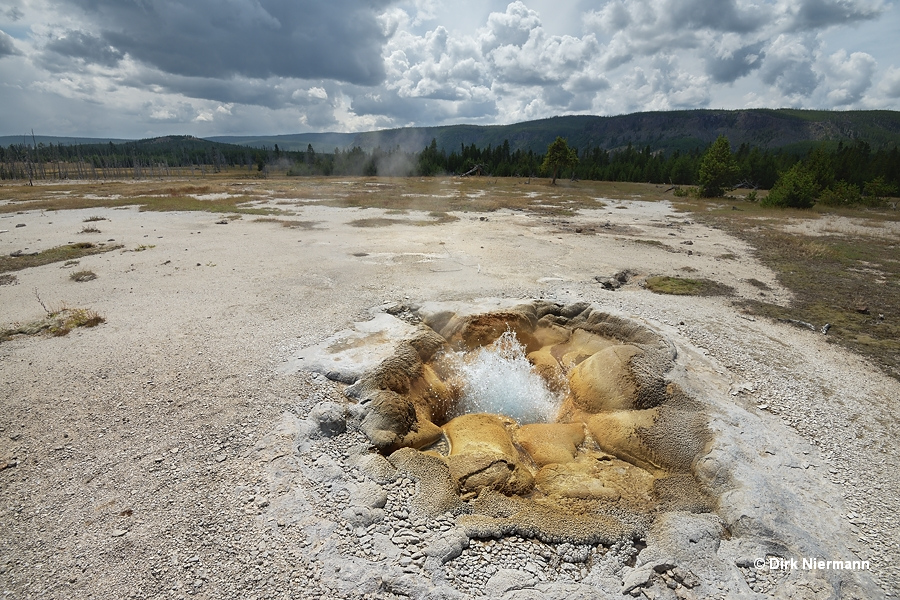
Page 1 2